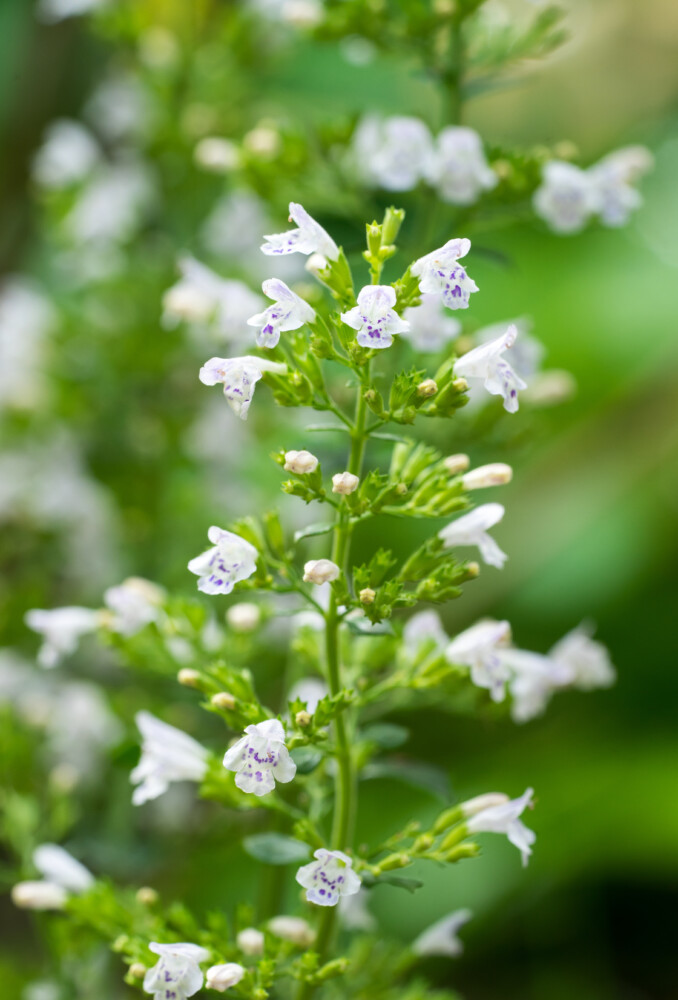The unusual events of the previous year have continued into the new year. Of course, the plants of the year for 2021 were selected in 2020; I have hope that the world’s difficulties will lessen as the new year progresses. The selections were, shall we say, unusual.
The Perennial Plant Association’s plant of the year is calamint or lesser calamint (botanical name: Calamintha nepeta subsp. nepeta).
This is a perfectly good plant, but it is not one that people walking through a beautiful flower garden are likely to be drawn to immediately and then run out to buy. It is a low-growing plant, up to about 18 inches tall, at most. It has tiny flowers, which are usually white, and it does well in the front of a border and as part of a rock garden or, possibly, a meadow. Calamint is native to Britain and parts of southern Europe, so the growing number of homeowners in Maine who are planting native gardens won’t be using it.
Nonetheless, pollinators love it, and, because it has aromatic foliage, deer and other garden pests avoid it.
I hadn’t heard of this plant before the plant of the year was announced, and I was immediately confused (which happens often), thinking of the species Nepeta (which includes catmint, which we grow all over our garden. My wife, Nancy, informed me to my surprise that we have a smaller, pink-flowered calamint somewhere in our garden that has survived, if not thrived.
I also wondered why the association chose a subspecies. In its announcement, the association said the subspecies – a variation that develops in response to growing conditions in a specific area – was chosen for its “size and vigor.” (Maybe they figured vigor is something everybody could use in this era of coronavirus.)
O’Donal’s notes in its 2020 catalog that the ‘White Cloud’ cultivar is a “longer-lived, better-smelling substitute for baby’s breath,” and Skillins notes that the plant is self-seeding. Those are both positives, so I may check it out the next time I go plant shopping.
The other popular program for plants of the year is the All-America Selections. Each year when these come out, I look first to see if Johnny’s Selected Seeds has any Northeast winners. The Winslow-based company has had 12 winners in the past, including peppers, squash, pumpkins and the ever-popular ‘Bright Lights’ Swiss chard.
Nope, nothing for Johnny’s this year.
Which isn’t surprising, because AAS selected only six winners for 2021 instead of the 18 or so it selects most years. As the announcement noted, “This year was a challenge in more ways than any of us ever imagined.”
The biggest prize from AAS goes to Zinnia Profusion Red Yellow Bicolor, the organization’s first Gold Medal winner since 2004. So this was a bright spot, literally, in a bad year.
“This gorgeous zinnia starts the season with a bold vibrant red center ring surrounded by golden-yellow outer petals,” the announcement said. “As the season progresses, the aging flowers morph into soft, beautiful shades of apricot, salmon, and dusty rose to bring a plethora of color to the garden.”
While I have grown zinnias from seed in our vegetable garden with some success, AAS recommends that the Zinnia Profusion Red Yellow Bicolor be started indoors under lights with bottom heat of about 74 degrees in a moistened growing medium. The seeds germinate in a week, and after about three weeks should be transplanted into 4-inch pots. After all danger of frost is gone, the potted plants can be planted outdoors.
The only other national winner is ‘Goldilocks’ squash, a 4-inch golden acorn squash. AAS describes it as a perfect companion to the green squash ‘Honey Bear,’ which was bred by Brent Loy, a famed breeder at University of New Hampshire who died last year.
Celosia Kelos Candela Pink is a regional winner, including the Northeast. This annual has bright pink blossom spikes that last a long time and can be dried for indoor arrangements.
The shallot Echalion Creme Brulee was a regional winner, but not for our Northeast region. In any case, it was out of stock when I checked Johnny’s website.
The Sweet Daisy Birdy Shasta daisy was also not a Northeast winner, though it did win in other regions, including the Great Lakes, but would grow fine here.
The only plant on these lists that I believe I must try is the zinnia. In my column two weeks ago, I mentioned that I intend to grow more annuals for cutting this year. This zinnia looks like it fits the bill. I’ll buy seedlings if I can find some, but I’ll also try to direct-seed the flowers, maybe under our cold frame.
And if I see the calamint, I might get one of those, too. Both flowers would, I think, be entertaining to grow – a criteria I’m pretty sure will continue to be a major goal for this year.
Tom Atwell is a freelance writer gardening in Cape Elizabeth. He can be contacted at: tomatwell@me.com.
Send questions/comments to the editors.



Comments are no longer available on this story